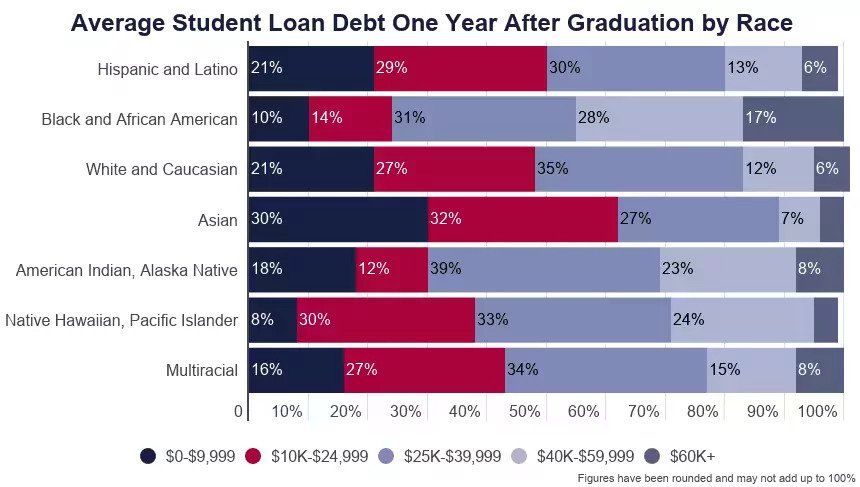Scholarship DAO Proves A Charity Can Fund Itself
School is back in the swing of things, reminding me of the costs associated with our higher education system. The average cost of college in the United States including tuition, books, supplies, and daily living expenses is $35,551 per year. That’s about 50% more than what you would earn working a full-time, minimum wage job ($12.00 per hour at 2,000 hours per year).
The cost of attending college is one of the major dividers in this country. And even for those who “pony up” and decide to attend, there’s a large disparity in the amount of debt that students leave college owing:

The process of finding, applying, and gaining a student scholarship is laborious and difficult. That’s why I’m fascinated by the idea of a Scholarship DAO, which presents a new model for distributing college scholarships.
Scholarships on the Blockchain
Scholarship DAOs aim to reinvent how the college scholarship system operates. It breaks the old model of seeking wealthy donors and replaces it with a cryptocurrency system that allows anyone to contribute any quantity of funding. Furthermore, it uses an income-sharing agreement (ISA) with its scholarship awardees to ensure that the fund is always replenished and not limited to annual fundraising.
What does this mean?
Students who get a scholarship from the DAO would enter into an ISA with the DAO, which requires them to pay ~12% of their annual wages for four years after college, assuming they found a suitable career. Thus, the Scholarship DAO is not only funded by donors but also replenished by the people it directly helps get an education.
Ideally, because a Scholarship DAO would operate on the blockchain, we would have more transparency into the financials of their charity. We would also decentralize operations, allowing anyone to contribute their time and resources to the cause. And it would democratize the student approval process.
Income-Sharing Agreements
Using ISAs on the backend to help students pay for college is not a new concept. Here are a few of the different ways ISAs are used today:
- ISA Program Builder – Helps universities and institutions set up their own ISAs (Leif, Align)
- Training Schools Offering ISAs – New education institutions that focus on educating and placing students in specific roles (Bloom Institute of Technology, General Assembly, App Academy)
- Universities Offering ISAs – Traditional universities with ISA options (Purdue)
- Direct-to-Student ISAs – Platforms that allow the student to pick the school and they’ll set the ISA terms (Lumni, Blair, Edly)
ISAs are not without problems. Flatiron School stopped offering them. Vemo Education had to shut down because it used deceptive marketing to promote its services.
Personally, I’m not a fan of the idea of incorporating ISAs into the Scholarship DAO model. To me, it burdens graduates and goes against the tenet of charity. But I understand that the ISA is a way of creating a self-funding charitable system. To me, it’s a v1 solution though.
Reinventing Charity
Charitable organizations have this conundrum of “closing the financing loop”. Basically, charities rely on periodic pushes for fundraising. It’s an endless cycle of finding donors and spending donations.
The biggest question about bringing charitable causes onto the blockchain is can you create a financial model that empowers the charity to fund itself? Anyone who can answer this question is looking at reinventing charity and the $480B+ that is donated annually.
I’ve been thinking about this problem a lot with 1Q9X, a DAO I started to fund experiments that reimagine the reading experience. If you have any ideas about reading, then please join us here.
This Everydays.WTF note is part of an ongoing series of notes on DAOs:
- Scholarship DAO Proves A Charity Can Fund Itself
- The First DAO-Owned Retail Store

Member discussion